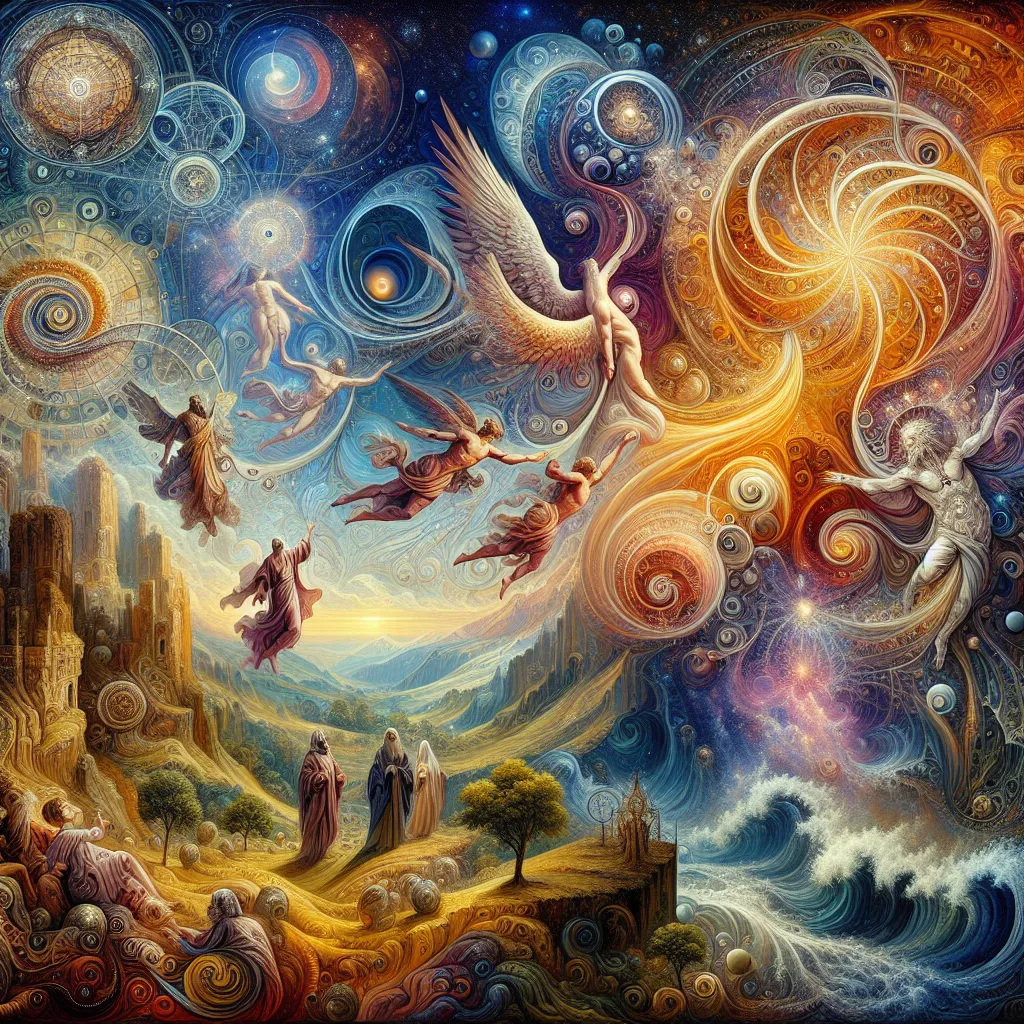
- Published on
- Authors

- Name
- You
Introduction
The Lurianic Kabbalah, named after Rabbi Isaac Luria (1534-1572), stands as one of the most profound teachings within Jewish mysticism. Rabbi Luria, also known as the Ari or the Arizal, revolutionized Kabbalistic thought with his unique and intricate doctrines, blending a systematic cosmology with esoteric wisdom that continues to influence scholars and mystics alike. This article delves deep into his teachings, examining their historical context and their relevance in today's scientific and spiritual dialogues.
The Historical Context
Rabbi Isaac Luria emerged in the 16th century, a period of immense upheaval and change. The aftermath of the Spanish Expulsion and the proliferation of printing technology created a fertile ground for new spiritual movements:
| Historical Context | Key Events |
|---|---|
| Spanish Expulsion | 1492 |
| Printing Revolution | 15th-16th Centuries |
| Safed as a Kabbalistic Center | 16th Century |
Safed in Galilee, where Luria settled, became the epicenter of Kabbalistic study, fostering an environment where mystical and esoteric teachings flourished.
The Core Teachings
Tzimtzum (Contraction)
Luria introduced the concept of Tzimtzum, the idea that God contracted His infinite light to create a vacuum into which the finite world could emerge. This contraction allowed for the existence of a world separate from the divine:
- Scientific Parallel: The Big Bang theory reflects a moment of immense contraction and subsequent expansion, analogous to the creation narrative of Tzimtzum.
Shevirat HaKelim (Shattering of the Vessels)
According to Luria, the initial vessels intended to contain divine light shattered, scattering sparks of holiness throughout the universe:
| Concept | Explanation |
|---|---|
| Shevirat HaKelim | The breaking of vessels resulting in the dispersion of divine sparks |
| Mystical Implication | This shattering signifies a cosmic fracture that humanity must repair |
- Scientific Parallel: This can be compared to the entropy principle in Thermodynamics, where ordered systems tend to disintegrate into disorder over time.
Tikkun Olam (Repairing the World)
Luria emphasized the importance of Tikkun Olam, the process of collecting and uplifting these scattered sparks, thereby repairing the cosmic rupture:
- Spiritual Practice: Acts of kindness, prayer, and following divine commandments.
- Scientific Parallel: Entropy reversal seen in self-organizing systems and the increasing complexity of the universe.
Mystical Practices and Rituals
Meditation and Intentions (Kavanot)
Luria encouraged deep meditation and specific intentions during prayer to align oneself with divine processes.
The Four Worlds
Luria's cosmology introduced four metaphysical worlds:
| World | Description |
|---|---|
| Atzilut | World of Emanation |
| Beriah | World of Creation |
| Yetzirah | World of Formation |
| Assiah | World of Action |
Each world represents a step away from pure divine light to the physical realm.
The Tree of Life
Luria expanded upon the Tree of Life, a mystical diagram mapping divine attributes (Sefirot) to guide spiritual ascent:
| Sefirot | Description |
|---|---|
| Keter | Crown - Divine Will |
| Chokhmah | Wisdom |
| Binah | Understanding |
| ... | ... |
Modern Relevance
The intersection of advanced science and mystical wisdom reflects in contemporary fields such as quantum physics, consciousness studies, and holistic health:
- Quantum Mechanics: The wave-particle duality and observer effects echo the mystical unity and separation in Lurianic thought.
- Holistic Health: Emphasizes balance and healing, much like Tikkun Olam encourages the restoration of spiritual and physical harmony.
Conclusion
Rabbi Isaac Luria's Lurianic Kabbalah remains a cornerstone of mystical study, offering profound insights into the universe's creation, structure, and purpose. By harmonizing ancient wisdom with modern scientific understanding, it provides a comprehensive framework for both spiritual and intellectual exploration, encouraging humanity's continuous journey towards enlightenment and repair.
Explore the teachings of Luria and discover how this ancient wisdom can inform and enrich your understanding of the cosmos, merging the mystical with the measurable in an ever-expanding quest for knowledge.
